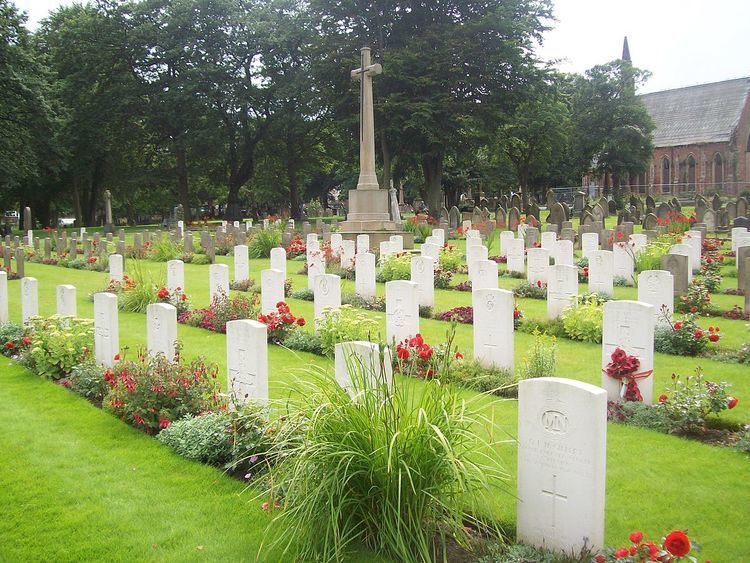Established 1856 Country United Kingdom Size 80 acres (32 ha) Phone +44 191 520 5555 | Location Sunderland Type Public Founded 1856 | |
 | ||
Owned by Sunderland City Council Address Chester Road, Sunderland SR4 7SU, United Kingdom Hours Open today · Open 24 hoursThursdayOpen 24 hoursFridayOpen 24 hoursSaturdayOpen 24 hoursSundayOpen 24 hoursMondayOpen 24 hoursTuesdayOpen 24 hoursWednesdayOpen 24 hours Burials Robert Gledden, John Bolam, William Reid Clanny Similar Sunderland Minster, St Peter's Church - Monkwearmouth, Holy Trinity Church - Sunderland, Hylton Castle, Mowbray Park | ||
Bishopwearmouth cemetery
Bishopwearmouth Cemetery is a cemetery in Sunderland, Tyne and Wear, England. It lies between Hylton Road and Chester Road (A183 road).
Contents
- Bishopwearmouth cemetery
- Graveyard vlogs bishopwearmouth cemetery sunderland amy mclean
- History
- Jewish burials
- War Graves
- Listed buildings
- Notable burials
- References
Graveyard vlogs bishopwearmouth cemetery sunderland amy mclean
History
Due to the cholera epidemic of 1831 and the subsequent overcrowding of churchyards, it was decided to build new cemeteries in Sunderland after the passing of the Burial Act 1852 and 1853. The 34 acres (14 ha) chosen for Bishopwearmouth Cemetery lay on the edge of the county and parliamentary boundary of Sunderland and was glebe land, owned by the Parish of Bishopwearmouth. The land was sold by the parish for £275 (£17,839.73 in 2007) per acre and the cemetery cost £2000 (£129,743.47 in 2007) to build. It opened in July 1856, on the same day as another new cemetery, Mere Knolls Cemetery, situated in Fulwell. All religious denominations were allotted separate areas and it soon became the town's main burial site. In 1891, the cemetery was extended further west and further extended in 1926. The whole site now covers 80 acres (32 ha).
Jewish burials
Sunderland once had a thriving Jewish population. In 1856, the only Jewish cemetery, at Ayres Quay in Bishopwearmouth, closed. A site at the new Bishopwearmouth Cemetery for Jewish burials was then dedicated in the north east corner of the cemetery (the first cemetery in County Durham to do so), adjacent to the Roman Catholic section. On the cemetery's expansion in 1926, another section was dedicated at the new western edge and on the cemetery's final expansion in 1926, the new north-west section was dedicated and a Jewish temple was built; this section is currently fenced-off from the other wards of the cemetery.
War Graves
In the First World War, part of Ward 3 (Section A) of the cemetery was set apart for burials of servicemen. This plot, at a central point on the path linking the cemetery's two entrances, was extended in the Second World War. In all, 237 Commonwealth service personnel (all but about 100 of whom were buried in the plot) from the First World War and 156 from the Second are buried in this cemetery. The Commonwealth War Graves Commission are also responsible for 31 non-World War service burials and one Dutch war grave.
Listed buildings
There are nine listed buildings within Bishopwearmouth Cemetery; all are Grade II. These are:
The central (Nonconformist) chapel was formerly a listed building until it was demolished due to vandalism. The memorial to the Victoria Hall disaster, formerly situated in the cemetery and now in Mowbray Park, is also a listed building.
